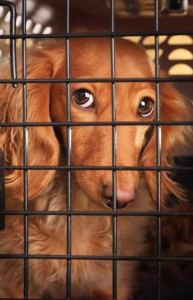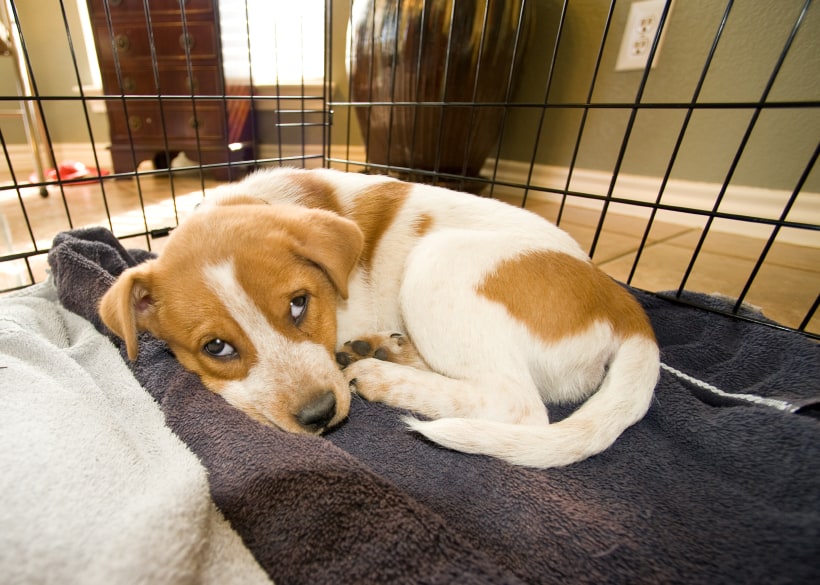Tips for Crate Training
Crate training is a wonderful training option for puppies, a crate can provide a safe and comfort zone for your puppy. Before dogs were dogs, they were wolves and wolves live in dens, a crate can represent a den to the modern dog. Read More about how your dog views den living. Crate training is a great way to help with potty training and has many benefits we often times do not consider. We as people often times can see the crate as a cage, if done introduced correctly a crate is more often times a place your pup chooses to go to in times of stress and when he/she feels the need for rest.
The crate should be just large enough for your puppy to stand up in, lie down in and turn completely around. You do not want the crate to be too big allowing your puppy to relieve itself in the back, this will create a dirty sleeping environment and dogs are typically animals that do not relieve themselves where they sleep. If your puppy does have an accident in its crate be sure to clean the crate out immediately.
How exactly is crate training done? First is to never create a negative association to the crate. To prevent negative associations to the crate, never use the crate as punishment, isolate them away from you in their crate, and never leave a puppy in a crate for a long period of time if they have had an accident in their crate.
 You want to place your crate in a place in your home that is out of the way but not completely confined to its own place. Make sure the crate is in a location where your puppy can still see what is happening when he or she is in the crate. Introduce the crate to your puppy with a delicious treat. First have your puppy get this treat when he is near the crate, then inside the crate. Make these sessions short, very short and remember you can practice multiple times a day and slowly extend how long your puppy is in the crate. Feed all meals to your puppy inside his or her crate, so your puppy learns that food is presented when inside they are inside the crate.
You want to place your crate in a place in your home that is out of the way but not completely confined to its own place. Make sure the crate is in a location where your puppy can still see what is happening when he or she is in the crate. Introduce the crate to your puppy with a delicious treat. First have your puppy get this treat when he is near the crate, then inside the crate. Make these sessions short, very short and remember you can practice multiple times a day and slowly extend how long your puppy is in the crate. Feed all meals to your puppy inside his or her crate, so your puppy learns that food is presented when inside they are inside the crate.
Allow your pup to play in its crate, provide fun toys to keep them occupied when you have to leave them in the crate. Try a Kong stuffed with peanut butter and treats, freezing the Kong will keep the puppy entertained longer. Giving your puppy a chew toy to help relieve stress or pain from teething can establish a positive association to its crate.
Some rules to remember when crate training are: never let your puppy out when he or she is barking or whining. If you do, the puppy will learn barking gets you to let them out and will continue to bark and whine until you do. Always give your puppy a potty break after spending some time in the crate, as your puppy matures these breaks will be less frequent.
The key to crate training your puppy is consistency and routine, make sure you plan ahead and give your puppy every opportunity to succeed during the crate training process.
This article is the fifth in a series on puppies. To read other articles in this series and learn more about puppies, click on the links below. There are many aspects to making crate training your puppy successful. For more tips or advice on crate training contact Highland Canine Training, LLC at training@highlandcanine.com or 866.200.2207.


You must be logged in to post a comment.